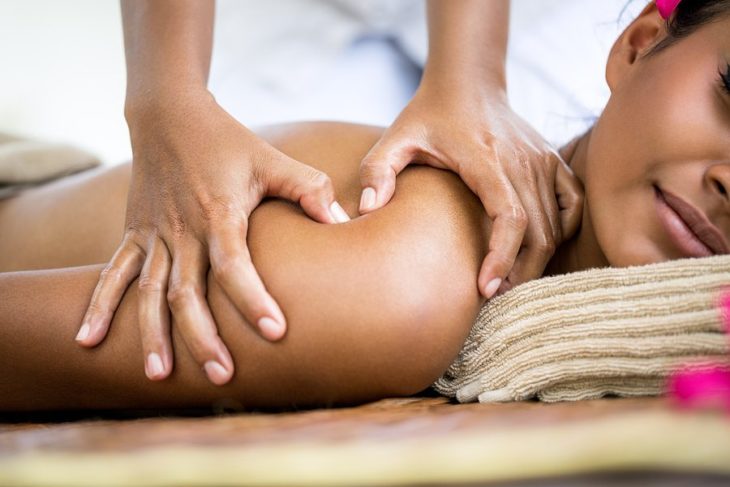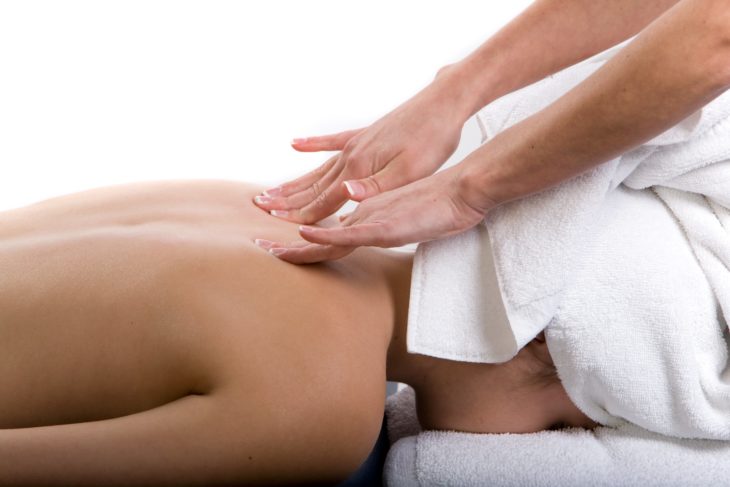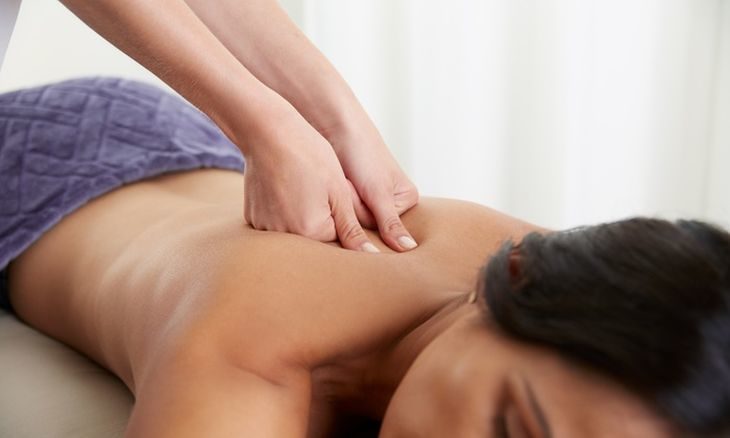Don’t ask for a deep tissue massage until you know what it actually involves.
Getting in deeper into the wonderful world of massage usually means asking for a deep tissue massage at the likes of Massage Envy. While it has numerous benefits, it isn’t usually reserved for full-body massage virgins due to the greater pressure involved. Here are things that you should be aware of and prepare for if you are truly to enjoy your first deep tissue massage.
Firmer and Deeper Massage
Deep tissue massage is similar to regular massage in many ways, particularly in the movements used (e.g., gliding and kneading). But there are also notable differences between the two types of massage, from the pressure used to the speed of the strokes.

Img source: rebirthdayspa.com
Deep tissue massage involves applying firmer pressure to the deeper layers of the muscle and the fascia, the connective tissue surrounding the muscles. The speed of the strokes is slower, too, such that the combination of firmer, deeper, and slower will likely be unfamiliar to a veteran regular massage client.
While a regular massage primarily relaxes the mind and body, a deep tissue massage has a deeper goal, so to speak. When done right, it relieves chronic aches and pains in the body, such as in the upper and lower back. Indeed, it’s highly recommended for relief from a stiff neck, chronic back pain, sore shoulders, and leg muscle tightness.
Pain and Discomfort
Since a deep tissue massage goes deeper, its techniques are used in breaking down muscle adhesions (i.e., bands of rigid tissues) and breaking up scar tissues. These adhesions, also known as knots to laymen, can cause pain, inflammation, and limited range of motion, even disrupt blood circulation resulting in even more health issues.
For this reason, you may experience discomfort, even a certain level of pain, during a deep tissue massage. This is especially true when your therapist works on your scar tissues and adhesions.
Is that good or bad? It may seem like discomfort or pain is a normal occurrence in a deep tissue massage, but it’s not a good one. It isn’t a sign, too, that your massage will be effective afterward – you will probably end up with bruises, blood clots, or temporary soreness lasting for days, if not weeks.

Img source: thecallalily.com
In fact, when you’re feeling discomfort or pain during a massage, your body will become tense up in reaction. Your therapist will then have a more challenging task in reaching deeper into your muscles resulting in a less effective massage.
Be sure to tell your therapist immediately if you’re starting to feel pain at any time during the massage. Your therapist will adjust his or her technique so as to avoid inducing pain; the adjustment can include prepping the superficial muscles first so as to make getting into the deeper muscles better.
If you feel soreness for more than a couple of days after a deep tissue massage, you should also inform your therapist about it.
From Light to Deep
Just like in exercise, your muscles have to be warmed up before these can be subjected to more pressure (i.e., stress). At the start of the massage, your therapist will apply a light pressure on your muscles to warm up and prepare them.
Your body will feel more relaxed with the techniques used at this stage. These techniques include stripping (i.e., a deep but gliding pressure) and friction (i.e., a pressure applied across the muscles’ grain in order to realign the tissue fibers and release knots).
Your therapist will then go deeper into your muscles and fascia with each phase of the massage. You will likely feel his or her knuckles, fingertips, hands, elbows and forearms doing the work. You will also feel that the pressure applied on your body becomes firmer, especially in stiff areas like the neck and shoulders.

Img source: groupon.com
You have to breathe normally during the massage. But your therapist will also ask you to breather deeper while massaging certain areas of your body. The deep breathing allows the muscles to relax and, thus, makes it easier for your therapist to reach deeper into your muscles.
To get the most benefits from a deep tissue massage, here are some things that you can do before and during the session.
- List down, if necessary, your health issues especially underlying medical conditions that can make any type of massage dangerous. These include allergic reactions, high blood pressure, and diabetes, to name a few.
- Tell the therapist about your preferences in massage oil or cream, as well as your preferred scents, if any.
- Drink a glass or two of water before the massage. A deep tissue massage releases toxins from the muscles resulting in feelings of nausea or fatigue afterwards. These symptoms can be alleviated by drinking enough water; you can ask the therapist for a pause in case you have to use the restroom for a break.
- Take a warm shower preferably before the massage. The warm water will loosen up your muscles and make your body clean enough for the therapist to like massaging it.
And don’t become addicted to deep tissue massage that you will want it every other day! Ask your therapist about the right interval between sessions since it depends on each person’s condition.
